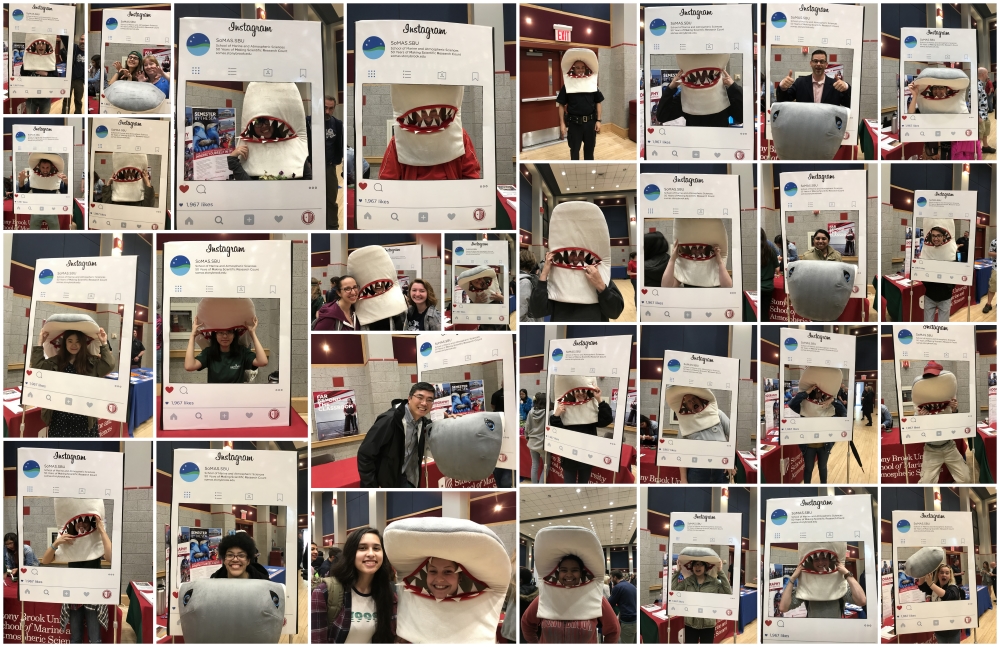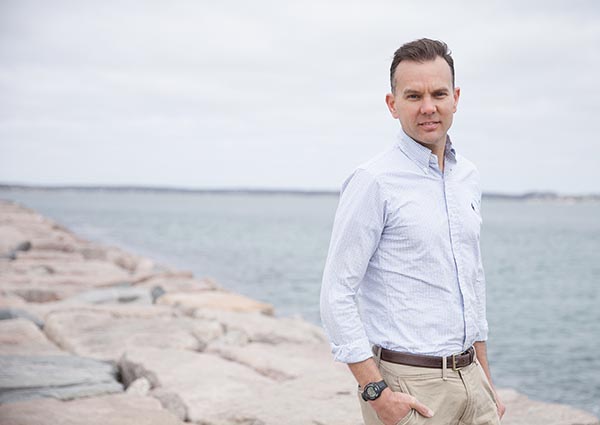


SoMAS Celebrates Earthstock 2017
Earthstock, the Stony Brook University annual celebration of Earth Day, has been an annual tradition for years. This year, in honor of our 50th Anniversary, SoMAS had a very significant presence at the event. On Monday April 17th, New York State Assemblyman Steve...
SoMAS Study Finds Climate Change Threatening Humans Through Toxic Algae Spread
Above: Professor Chris Gobler From SBU-led Study: Climate Change Threatening Humans Through Toxic Algae Spread on SBU Happenings on April 24, 2017 One oceanic consequence of climate change is well underway, and it’s likely already having a negative impact on human...ROBERT D. CESS DISTINGUISHED TAOS SEMINAR 2017
The Institute for Terrestrial and Planetary Atmospheres (ITPA) invites a distinguished scholar each year to present a seminar to honor the contributions of Distinguished Professor Emeritus Robert D. Cess to the development of atmospheric sciences at Stony Brook...
SoMAS secures NSF Grant to Bolster Geosciences Education Support for Underrepresented Students
From “NSF Grant Bolsters Geosciences Education Support for Underrepresented Students” on SBU Happenings, December 21, 2016 with contributions by Brian Colle Stony Brook University was recently awarded a three-year grant from the National Science Foundation...
SoMAS Study Uses Radar to Better Predict Shallow Cloud Coverage
Shallow convection plays a critical role in the heat and moisture transfer between the boundary layer and free atmosphere above about 2 km. However, with an average spatial scale of 0.5–1.5 km, shallow cumuli are not resolved in weather forecast and climate models,...
SoMAS Research on Cloud Microphysics – Atmospheric Ice Formation featured in Physical Chemistry Chemical Physics
The prediction of the formation of ice crystals in the atmosphere presents one of the biggest challenges in the atmospheric sciences. Ice crystals will affect the properties of clouds with consequences for climate and the hydrological cycle and thus precipitation. In the atmosphere ice forms on pre-existing airborne particles, also called aerosols, which are present in sizes from a few nanometers to hundreds of micrometers. The physical and chemical properties of these aerosol particles govern the conditions under which ice can form. To improve our fundamental knowledge of atmospheric ice crystal formation, a novel experimental setup has been developed that allows to observe ice formation on the nanoscale. An environmental chamber, in the size of a poppy seed, that allows to simulate atmospheric conditions up to ~13 km in height, is implemented within an electron microscope. This approach allows to observe in situ and at high resolution how and where ice forms on nano- and micrometer sized aerosol particles, i.e. being witness of the birth of an embryonic ice crystal.

SoMAS Faculty and Staff Honored with Chancellor’s Award for Excellence
SoMAS Faculty and staff were among the honorees at the Fall University Awards Dinner where they were recognized for their hard work and dedicated service by Interim Provost and Senior Vice President for Academic Affairs Charles Taber. Congratulations to them all!...
$3M NSF Grant Will Fund PhD Student Training in Data Analytics, Visualization and Science Communication
Pictured above, left to right, back row: IACS and STRIDE PI Robert Harrison; CoPIs Arie Kaufman and Janet Nye. Front row: CoPIs Liliana Davalos, Heather Lynch and Christine O’Connell. CoPIs not pictured: Joel Saltz, Erez Zadok and Minghua Zhang From $3M NSF Grant Will...
Welcome Back!
From Larry Swanson, Interim Dean of SoMAS and Director of MSRC. Welcome to all new faculty, staff and students and welcome back to those who have been away for the summer either on vacation or undertaking research projects in the field. Certainly there has been...
SoMAS Professor appointed Editor-In-Chief of Journal of Geophysical Research – Atmospheres
The American Geophysical Union (AGU) has appointed Former Dean Minghua Zhang as Editor-in-Chief (EiC) of the Journal of Geophysical Research (JGR) – Atmospheres. JGR-Atmospheres is one of the most prestigious and largest journal in Atmospheric Sciences. Each...
Sharknado Touches Down on Long Island!
This weekend marks the release of another #Sharknado film, and The School of Marine and Atmospheric Sciences at Stony Brook University remains at the forefront of the Sharknado phenomenon with a Minor in Sharknado Studies and faculty conducting research that addresses...
SoMAS Convocation 2016
Congratulations to our graduates! The annual SoMAS Convocation occurred on Friday, May 20, 2016 at the SAC auditorium. Students gathered with their friends and family and SoMAS faculty and staff to celebrate the completion of their journey at Stony Brook University....SoMAS Professor Daniel Knopf’s Microbial Research Key to Creation of Artificial Snow
Science Magazine highlighted Dr. Daniel Knopf’s article published in Science Advances “Ice-nucleating bacteria control the order and dynamics of interfacial water” by Pandey et al. (http://advances.sciencemag.org/content/2/4/e1501630) with a movie...SoMAS Student Named to America East All-Academic Team
Three members of the Stony Brook indoor track & field teams were named America East All-Academic Team selections by the conference office Friday, as junior Christina Melian (Staten Island, N.Y.) and senior Kate Pouder (Miller Place, N.Y.) earned spots on the women’s team and senior Joe Clark (Worcester, Mass.) was tabbed for the men’s team.
Clark, an Applied Math & Statistics/Atmospheric & Oceanic Sciences double major, holds a 3.73 GPA. Clark scored in both the DMR and the mile at the America East Championships in February.



